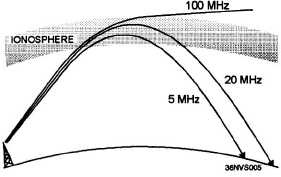Figure 1-4.—Effects of ionospheric density on radio waves.
Layer Density
Figure 1-4 shows the relationship between
radio waves and ionization density. Each ionized
layer has a middle region of relatively dense
ionization with less intensity above and below. As
a radio wave enters a region of increasing
ionization, a velocity increase causes it to bend
back toward the earth. In the highly dense
middle region, refraction occurs more slowly
because the ionization density is uniform. As the
wave enters the upper less dense region, the
velocity of the upper part of the wave decreases
and the wave is bent away from the earth.
Frequency
The lower the frequency of a radio wave, the
more rapidly the wave is refracted by a given
degree of ionization. Figure 1-5 shows three
separate waves of differing frequencies entering
the ionosphere at the same angle. You can see that
the 5-MHz wave is refracted quite sharply, while
the 20-MHz wave is refracted less sharply and
returns to earth at a greater distance than the 5-
MHz wave. Notice that the 100-MHz wave is lost
into space. For any given ionized layer, there is a
frequency, called the escape point, at which energy
transmitted directly upward will escape into
space. The maximum frequency just below the
escape point is called the critical frequency. In
this example, the 100-MHz wave’s frequency is
greater than the critical frequency for that ionized
layer.
Figure 1-5.—Frequency versus refraction
and distance.
The critical frequency of a layer depends upon
the layer’s density. If a wave passes through a
1-5



